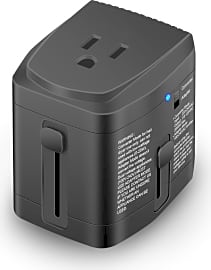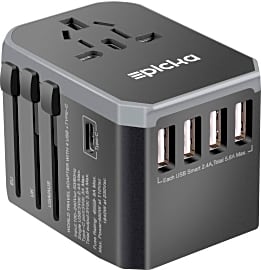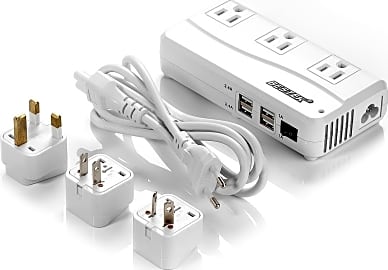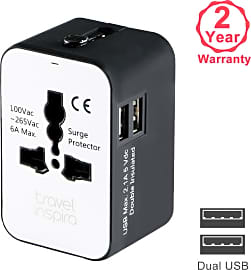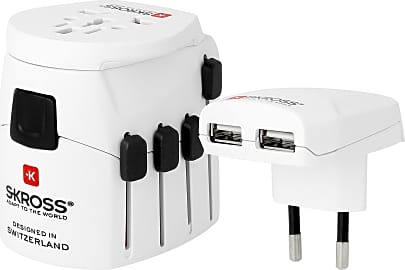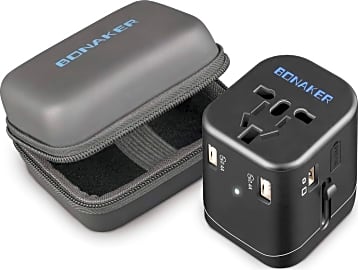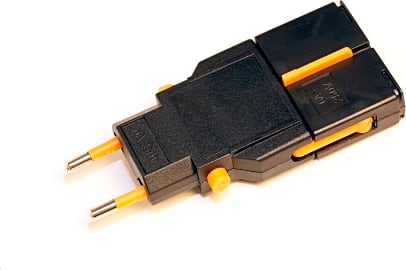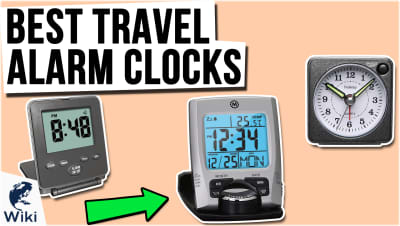The 10 Best Travel Plug Adapters

This wiki has been updated 37 times since it was first published in April of 2016. If you're planning on taking all your mobile devices with you on your next international travel adventure, then you should think about packing one of these universal plug adapters for the trip, too. Offering compatibility with almost every country's electrical system, they'll let you set up an impromptu office or entertainment center – or simply charge your phone – wherever you go. When users buy our independently chosen editorial recommendations, we may earn commissions to help fund the Wiki.
Editor's Notes
January 07, 2021:
It was a fairly uneventful round of updates, with all our picks from last year still holding strong. However, we did end up phasing out the Kensington International and Loop World LE-TA01. Both of these choices were still fine selections, but we felt that their offering of two USB ports was limiting.
In their places, we added the Epicka Worldwide and the Bonaker 2107. We favored the Worldwide over the 2107, because it has a USB-C port, but both units offer four USB-A ports, serviceable carrying cases, overcurrent protection via fuse, and onboard storage for a spare fuse — which is a nice touch if you blow your original in a remote location.
December 19, 2019:
Our previous picks for this category held reasonably true during this round of updates. However, we did remove the Bestek Smart Charge due to availability issues, and we replaced our previous Poweradd ranking with the Poweradd Second Generation, a newer model that comes with a convenient carrying case and improved USB charging speed. We also added the Saunorch High Speed to the top of our list, impressed among other things by its USB-C charge port, as this style of cable continues to become more ubiquitous.
A few things to think about while you shop the category:
Capacity: There are few things more frustrating than juggling multiple devices when you’ve only got a single charge port and you’re in a rush. Consider how many outlets you’re likely to need before making your final decision to purchase. Compact devices like the Loop World 3.0 are nice, but they only offer you one AC outlet, which might be ok if most of your devices charge via USB, but it also might amount to a real pain for you. Larger options like the Bestek Voltage Converter feature multiple AC outlets, and still ample space for USB devices.
Portability: For the most part, offerings in this category are designed small enough to easily fit into most suitcases or carry-on luggage, but some options have taken extra steps to improve their portability. The Loop World 3.0 and the Saunorch High Speed have retractable prongs, so you never need to worry about them bending over, and the Poweradd Second Generation and Pac2Go All-In-One come with carrying cases for extra cushioning.
Safety: Often, these adapters will be the last line of defense between your devices and electrical catastrophe, so it’s nice that many of them have integrated fuses into their design, to protect against overcurrent and overheating conditions. The Pac2Go All-In-One even comes with an extra fuse. One negativism in the safety department that might be worth mentioning is the unfortunate absence of a grounding prong on the Kikkerland UL03-A, which prevents the device from passing along short-circuit protection to its connected loads.
How To Be A Powerful Traveler
Some adapters are country specific, meaning that they’re built to receive one specific kind of plug and convert it to fit another specific kind of outlet.
Long before I ever traveled overseas, I received my fair share of warnings regarding the differences between electrical power supplies in the US and those abroad. If you so much as mention the desire to travel to another country to someone who’s been literally anywhere outside your country of origin, you’re probably going to get your fair share of advice as well.
The most obvious problem you’ll encounter when trying to use international outlets with a domestic plug is a stark difference in shape. In the US, for example, ungrounded outlets contain two vertically oriented, rectangular slots that correspond to an American plug’s two vertically oriented rectangular prongs. Tab A goes in to slot B with no problem.
In most of Europe, however, those two vertically oriented rectangles become two circles, and there’s an entire lexicon of insults around trying to fit a square peg into a round hole, so we know that’s not going to work.
What a travel plug adapter does, quite simply, is to take whatever plug you need to insert into an outlet and receive it on one end. On the other end are prongs outfitted for one or more different styles of international outlet, allowing you to take an American plug and insert it into a European outlet, or a British plug and insert it into an Australian outlet.
Some adapters are country specific, meaning that they’re built to receive one specific kind of plug and convert it to fit another specific kind of outlet. Others are more interchangeable or universal, depending largely on how much you want to spend. The whole affair can get a little confusing, however, so here's an equally confusing map.
Transform Your Devices
Before you go and buy a travel adapter for every single one of your electronic devices and electrical appliances, it’s important to understand some of the more volatile differences between your country’s power supply and those where you intend to travel.
Let’s use an American piece of equipment traveling overseas to paint the picture, and let’s make it an iPhone because they’re so ubiquitous. And iPhone is something that we should consider an electronic device as opposed to an electrical device. The difference is subtle but the distinction is important. Electronic devices contain computer chips; electrical devices do not.
Any electronic device without a clear transformer in its power supply risks significant damage when plugged in overseas using only an adapter.
In America, all of the standard outlets across the nation deliver 110-120 volts of alternating current. In most of the rest of the world, outlets deliver 220-240 volts of the same. It wouldn’t make a lot of financial sense for a company like Apple to create different iPhones for different markets, so they go with the international standard of 220.
In order for an iPhone bought in America to charge safely and properly overseas (and vice versa), one only needs a travel adapter and the charging block supplied by Apple. That block acts as a regulator, standardizing the voltage delivered to your phone no matter where you plug it in. Your computers have these as well, usually located about half way down the charging cable.
Any electronic device without a clear transformer in its power supply risks significant damage when plugged in overseas using only an adapter. For such devices, you’d do well to get yourself a voltage converter for optimal safety.
Electronic devices, on the other hand, the ones without computer chips, only need a converter if they pull a majority of the amps coming through an outlet. High wattage devices like hair dryers and curling irons (things that get hot, usually) operate at maximum efficiency and a much higher degree of safety when used with a converter, and not just an adapter.
Now that you have an idea as to what you’re going to need to make all of your devices work overseas, you can start to look at the options on our list with an eye for efficiency and style. The specific adaptations you need will guide your hand, for the most part, but you should also keep an eye out for outlet count, internal transformers, and other features that might make your traveling experience run that much more smoothly.
Setting Standards
By the turn of the 20th century, the debate over whether electrical standards should follow Thomas Edison’s 60Hz, 110-volt, direct current model or Nikola Tesla’s 50Hz, 220-volt, alternating current model had more or less settled out.
In Europe, the delivery method for alternating current followed Tesla’s instructions.
In the US, the frequency and voltage of Edison’s system became the standard, but the country made the switch to alternating current for its capability to send higher voltages across greater distances without much power loss. America is pretty big, so that came in handy. In Europe, the delivery method for alternating current followed Tesla’s instructions.
At the time, there wasn’t a whole heck of a lot of travel among the continents, and individuals didn’t travel with any electrical devices, so the thought to make plugs and sockets to a universal standard never entered the picture. While in the US, Harvey Hubbell’s design for a plug to safely connect electrical devices to a home’s power supply gained popularity, nearly a dozen other styles of plug and socket entered the global marketplace.
If a nation had itself an empire to speak of, the countries in its empire inevitably adapted the plugs and sockets of its motherland. That’s why a bunch of countries in Africa and Asia use plugs and sockets like those you might find in Britain or France.




